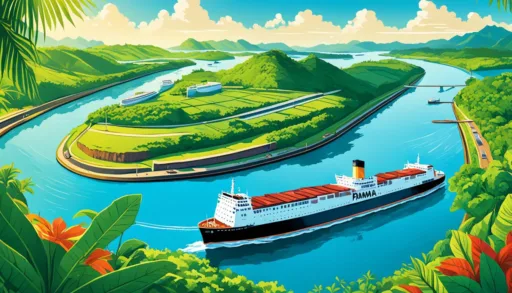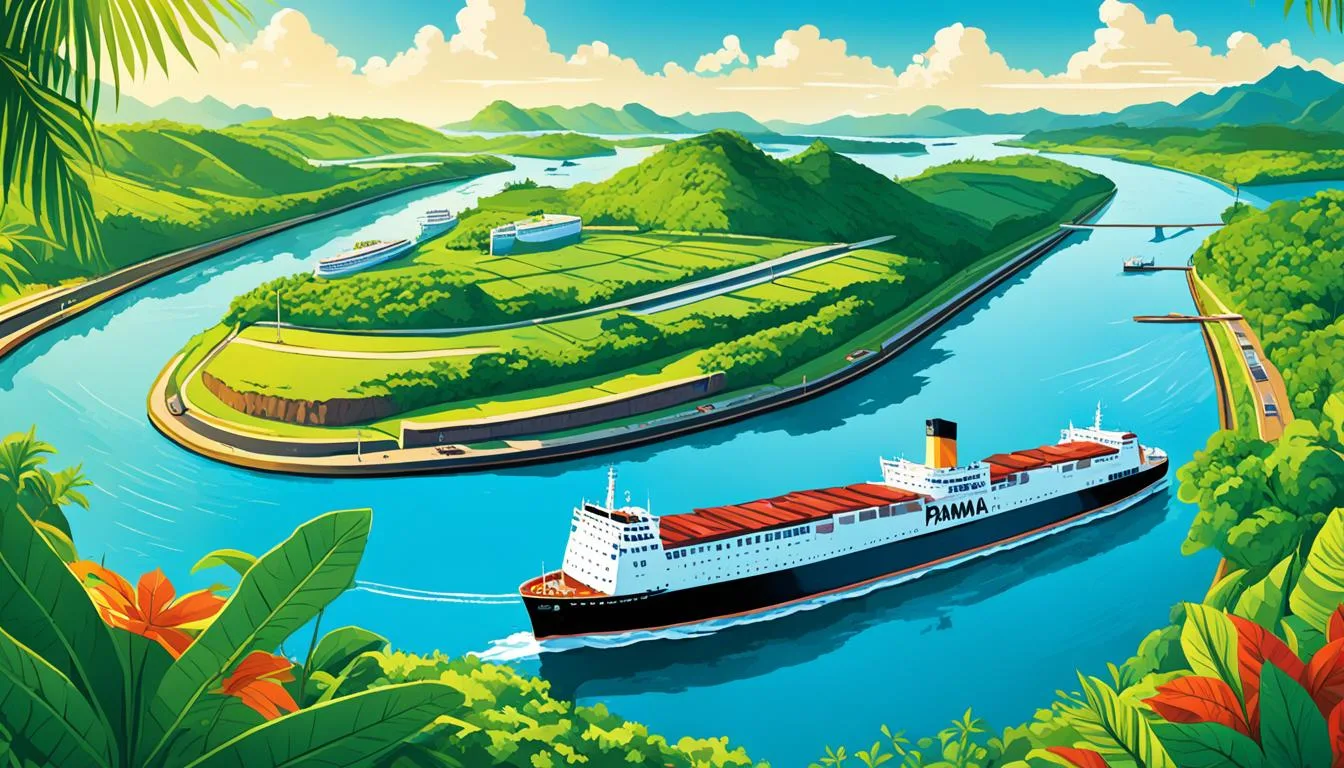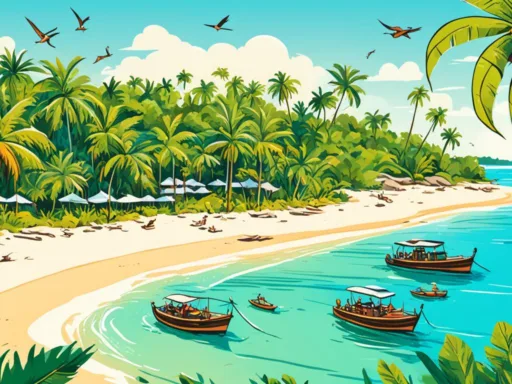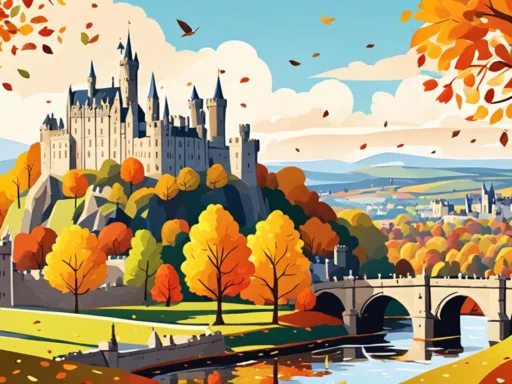Think Panama, and pristine beaches adorned with palm trees, the allure of the mighty Panama Canal, and verdant rainforests bursting with biodiversity come to mind. But is there truly a best time to visit Panama that transcends the typical travel brochure advice? Most might point to the dry season, yet the Panama climate for tourists reveals an intricate tapestry of experiences beyond clear skies and sunshine. From the charm of Panama City’s Casco Viejo district to the remote beauty of the San Blas Islands, navigating Panama travel seasons unlocks a world where colonial history meets indigenous culture, and cityscapes give way to nature’s playgrounds. Whether your heart is set on cultural festivities or serene beach solitude, Panama’s palette of experiences is as diverse as its ecosystems. So, before setting dates and packing bags, let’s dive deep into the Panama weather guide to ensure your Panama vacation timing aligns with your adventurous spirit, promising an itinerary rich with unforgettable memories.
Key Takeaways
- Unveiling the optimal travel times for various activities across Panama’s diverse landscape.
- Insights into Panama’s unique weather patterns for a well-planned itinerary.
- Understanding the cultural and climatic nuances that influence Panama vacation timing.
- Tips for aligning travel preferences with Panama’s weather guide for a gratifying trip.
- Strategies to traverse Panama travel seasons, from sun-kissed coasts to jubilant celebrations.
Panama’s Weather Guide and Annual Highlights
Planning your journey to Panama requires understanding its seasonal weather patterns, which dramatically affect the landscape and opportunities for visitor activities. Knowing the ideal time to go to Panama ensures maximizing your experience, whether it be adventuring through lush rainforests or basking in the vibrant cultural festivities. Below we dive into the nuances of each season along with Panama travel tips to gear you up for the peak travel seasons in Panama.
The Dry Season: Favorable for Sightseeing and Festivals
From December to April, Panama presents its sunny disposition, inviting visitors to explore with unabated curiosity. The dry season spells clear skies, low humidity, and minimal precipitation, making it the premium period for sightseeing. Traverse the bustling streets of Panama City’s historic quarters and bask on the pristine beaches of the San Blas Islands under optimal conditions.
The Wet Season: A Lusher Side of Panama’s Nature
In stark contrast, the wet season, which stretches from May to November, dresses the country in varied shades of green. While facing frequent rains, the landscape flourishes, offering lush vistas and a surge in wildlife activity. Fewer tourists venture out during this period, lending to a more personal and tranquil experience of Panama’s natural beauty for those seeking solitude amidst vibrant landscapes.
Carnival and Jazz: Panama’s Vibrant Cultural Scene
The dry season doesn’t just attract with its weather; it’s also a cultural beacon with electrifying events like Carnival and the Panama Jazz Festival. These festivals are deep-rooted expressions of Panama’s rich culture and traditions, offering visitors a unique glimpse into the heart and soul of Panamanian heritage through music, dance, and artful celebration.
Best Time to Visit Panama: A Month-By-Month Breakdown
When planning a Panama vacation, timing is everything. The country’s unique position in Central America means Panama travel seasons are distinct, with the weather playing a pivotal role in your experience. Here’s a guide to help you decipher the Panama weather guide and choose the best time for your visit.
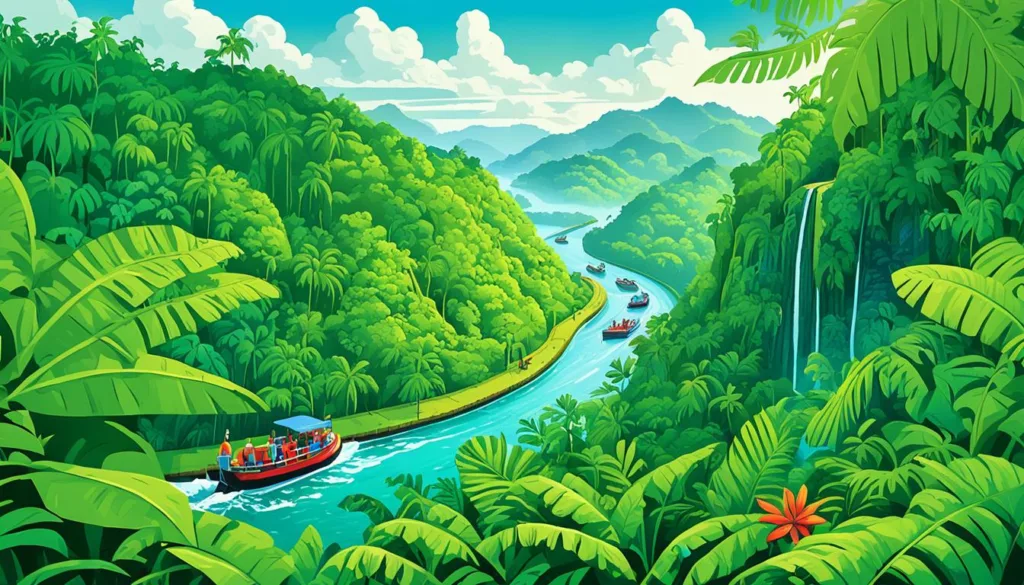
In the early months of the year, particularly January and February, Panama reveals its splendor with drier climates and cooler air. These are the peak months for tourists looking to escape the chill of northern winters, offering the perfect setting for a multitude of outdoor activities.
- January & February: Ideal for hiking and water sports like kayaking, with moderate temperatures from mid 70s to low 80s.
- March & April: Seas remain tranquil, and while it traditionally marks the end of the dry season, these months are still great for diving and surfing.
As the year progresses, Panama’s weather presents a tapestry of changes, with each month offering its unique attractions:
| Month | Weather Overview | Traveler’s Tip |
|---|---|---|
| May – August | Start of the wet season, with short and refreshing afternoon rains. | Ideal time for those seeking lush landscapes and quieter travels. |
| September – November | Height of the rainy season, featuring heavier but manageable showers. | Look out for cruise deals, as prices tend to be more affordable. |
| December | The return of drier weather, drawing in crowds for holiday celebrations. | A festive time to enjoy Panama’s vibrant culture and sunny climates. |
Remember, whereas the wet season brings more rain, it also nurtures the bright, verdant side of Panama’s nature, perfect for eco-tourism and witnessing the full throttle of its biodiversity. Whether you choose the lively peak season or the tranquil green season, you’re sure to encounter the enduring charm of Panama.
Embark on a Panama Canal Adventure
Considering the best time to visit Panama? Look no further than the iconic Panama Canal adventure during the country’s peak travel seasons. Offering not just a passage between the Atlantic and Pacific Oceans, the Panama Canal stands as a testament to human ambition and ingenuity. Embarking on this journey during the right season enhances the experience immensely.
Discover the Engineering Marvel during the Dry Season
The period from December to April, known as the dry season, is perfect for witnessing the full glory of this engineering marvel. The lack of rain and the mild climate make it an exceptional time for tourists to delve into the history and mechanics of the Canal without any weather disruptions.
Exclusive Experiences in Panama Canal Tours
Discerning travelers can indulge in exclusive experiences with VIP canal tours. These tours provide a closer look at the complexities and feats of engineering that define the Panama Canal, all while basking in the comfort of clear skies and warm sunshine that the dry season reliably brings.
Peak Seasons for Cruise Enthusiasts
Cruise enthusiasts have identified the months of January and February as the prime time to navigate the Panama Canal. These months strike a perfect balance with favorable maritime conditions for an uninterrupted journey through this interoceanic corridor. Economical cruise fares and optimal weather conditions turn the canal into a bustling hub of global travelers.
| Month | Weather | Cruise Fares | Experience |
|---|---|---|---|
| December-April | Clear & Dry | Starts at $65/night | VIP Tours & Smooth Sailing |
| January-February | Temperate & Calm Seas | Most Economical | Lively Traveler Scene |
| March-April | Warm | Competitive Pricing | Diverse Itineraries |
Whether you’re a history buff, a maritime enthusiast, or simply in search of a transformative journey, a Panama Canal adventure is an awe-inspiring experience. Aligning your visit with Panama’s peak travel seasons further ensures a voyage filled with comfort, discovery, and the wonder of crossing from one ocean to another in just a matter of hours.
Immerse in the Biodiversity of Panama’s Rainforests
Embarking on Panama rainforest adventures is to step into a world vibrant with tropical life and ecological wonders. The country’s natural reserves and highland regions are not merely destinations—they are profound encounters with the biodiversity of Panama. With a wealth of Panama travel tips at hand, nature enthusiasts can navigate these ecosystems responsibly, ensuring minimal impact while maximizing their personal experience.
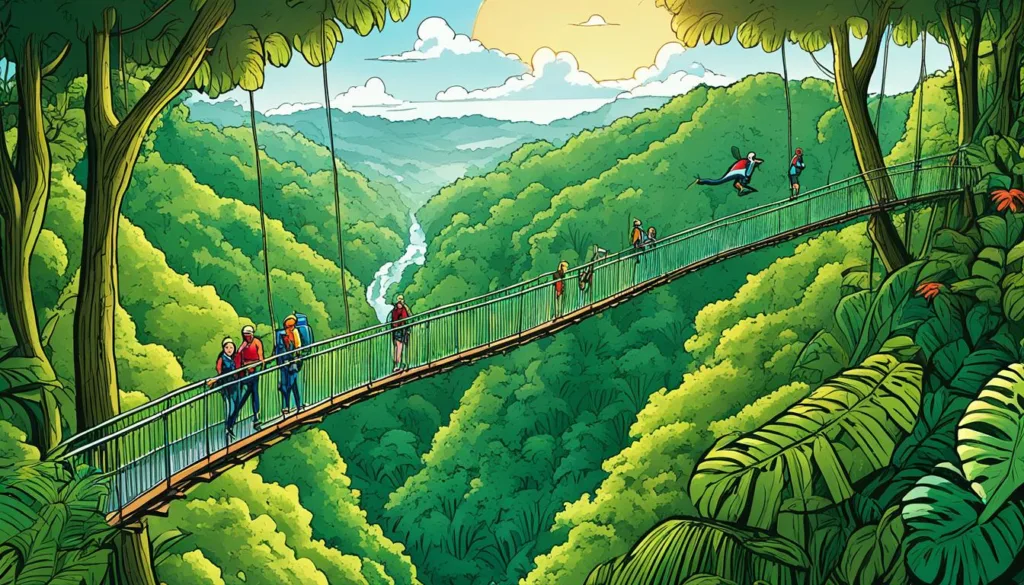
Trekking in the Chiriquí Highlands
The Chiriquí Highlands present an ideal tableau for the trekker’s spirit, where the echo of the elusive quetzal might guide one through mist-enshrouded trails. Amidst the grandeur of the highlands, journey along the famous Quetzal Trail, a sanctuary for a myriad of bird species, offering more than just a walk but an exploration into a living, breathing avian gallery.
Wildlife Spotting in Untouched Natural Reserves
Thriving around every leaf and lurking in the depths of pristine waters, the rainforests of Panama boast a theater of the wild, unscripted and spontaneous. Observing howler monkeys, catching a glimpse of the shimmering scales of caiman, or witnessing the grace of dolphins are experiences etched into the heart of the traveler forever.
Rainforest Visits: Best Practices and Ideal Seasons
Whether enveloped by the vivacious life of the wet season or embraced by the more tranquil and accessible dry season paths, visiting Panama’s rainforests requires awareness of both the climate and the ecosystem’s needs. Adhering to ecological best practices secures the longevity and vitality of these irreplaceable habitats, ensuring that these adventures remain possible for generations to come.
| Season | Climate | Wildlife Activity | Trekking Conditions |
|---|---|---|---|
| Dry Season | Milder, less rainfall | Good visibility, migratory birds | Optimal trail access, comfortable hikes |
| Wet Season | Humid, frequent rains | Lush flora, vibrant fauna | Challenging trails, adventure-rich |
Engage in eco-conscious travel to witness the splendors of Panama’s rainforests and contribute to the preservation of one of the world’s most diverse ecosystems.
Coastal Escapes: Pacific Coasts and Caribbean Shores
As the Panama climate for tourists varies significantly from coast to coast, discerning travelers are keenly aware that the experiences on Panama’s Pacific Coast differ markedly from those on its Caribbean shores. For thrill-seekers and water sports aficionados, the Pacific side offers a vibrant playground. During the first part of the rainy season, when the sea is as predictable as a well-timed clock, enthusiasts can indulge in kayaking, snorkeling, and the underwater wonders of scuba diving.
With safety as a priority, a word of wise caution is warranted; the idyllic islands of Panama and their coastal counterparts can occasionally harbour strong riptides. It’s essential to be mindful of such natural occurrences and to respect the advice of local experts while enjoying the stunning coastal escapes Panama has to offer.
“Panama’s coastlines are a tapestry of color and life, offering a blend of adventure and relaxation to tourists in search of an escape from the ordinary.”
The Caribbean, on the other hand, is celebrated for its serene beauty, a picturesque dream for beach lovers. The dry season, with its clear skies from December to April, embellishes the Caribbean side, particularly the San Blas Islands. These islands epitomize paradise with soft white sands and aquamarine waters inviting absolute tranquility.
Below is a table that encapsulates the offerings of both the Pacific and Caribbean coasts of Panama, allowing travelers to gauge what to expect when planning their ideal coastal escape:
| Pacific Coast | Caribbean Coast |
|---|---|
| Robust water sports activities | Tranquil beach experience |
| Best visited during the rainy season’s start | Optimal visit during the dry season (Dec-Apr) |
| Exciting snorkeling and diving spots | Pristine, untouched beaches |
| Be cautious of riptides | Calm, clear turquoise waters |
| Diverse marine life encounters | Idyllic islands, perfect for relaxation |
Panama’s powerful allure for tourists doesn’t just stem from the Panama climate, but also from its diverse coastal offerings. From the exhilarating Pacific to the peaceful Caribbean, each coastline furnishes an unforgettable chapter to a vacation tale. So whether you seek the thrill of a Pacific wave or the calm of a Caribbean sunrise, Panama’s shores are an invitation to discover and enjoy.
Discover the Rich Culture of Indigenous Communities
Panama, a land awash with cultural wealth, is a shining beacon for immersive travel experiences that bring to light the lifestyles and traditions of its indigenous communities. Embark on a cultural voyage that weaves through the vibrant tapestry of Panama’s indigenous heritage, from the sun-kissed archipelagos to the verdant rainforests. Below, we’ll delve into the cultural depths of the Guna Yala, Emberá, and Ngobe-Buglé peoples, along with a celebration of the famed art of Molas.
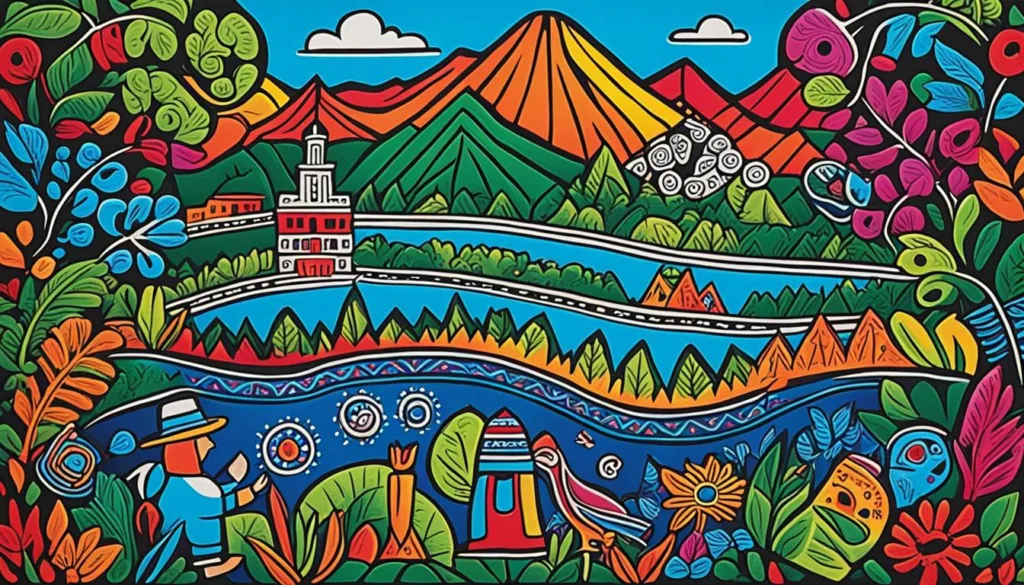
Engaging with the Guna Yala People in the San Blas Islands
The Guna Yala community extends a heartfelt invitation to witness their way of life in the idyllic San Blas Islands. Visiting these shores isn’t just scenic—it’s a plunge into age-old customs, where the turquoise waters tell tales of traditional fishing methods and the sails of boats whisper of journeys past.
Encounters with Emberá and Ngobe-Buglé Cultures
Step further into Panama’s richness with the Emberá tribes, nestled in the Chagres Rainforest. Here, the percussive rhythm of traditional drums escorts you into a world of dance and melody. In the tranquil archipelago of Bocas del Toro, the Ngobe-Buglé culture thrives, offering a unique perspective on life through their crafted narratives and vibrant dance.
Cultural Celebrations and the Art of Molas
Cultural celebrations in Panama serve as the heartbeats of the nation’s identity. The art of Molas stands as a testament to the endurance of tradition, with every stitch a story woven by the hands of Kuna artisans. Below is a glimpse of the vital stats and symbolic significance of Molas.
| Attribute | Description | Cultural Significance |
|---|---|---|
| Colors | Bright and varied | Reflects the vibrant Kuna environment and spirit |
| Patterns | Geometric and representative | Each pattern tells a part of Kuna myth and history |
| Technique | Reverse appliqué | Passed down through generations as a rite of heritage |
| Materials | Cotton fabric and thread | Leverages locally sourced and sustainable materials |
| Use | Clothing, artwork, accessories | Serves both practical garments and as a canvas for storytelling |
Embarking on a journey to discover the indigenous communities in Panama and their cultural celebrations is to embrace a history rich with creativity and resilience. It’s in the intricate designs of the Molas and the harmonious celebrations of independence that we find the true artistry of Panama’s indigenous legacy.
Conclusion
Panama, with its dynamic climate and festive rhythm, stands as a year-round destination for travelers with distinct preferences. Craft an unforgettable Panama visit by intertwining travel advice for Panama with personal inclinations, ensuring every moment aligns with the sought-after experiences. From soaking up cultural festivities to discovering tranquil coasts and lush rainforests, the essence of Panama is captured through its varied offerings.
To plan your Panama getaway effectively, merge careful consideration of weather patterns with the rich tapestry of cultural events. This methodical approach paves the way for explorations that deeply resonate with the country’s vibrancy, culminating in a journey that not only delights but also educates and inspires.
Equipped with expert insights and strategic travel advice for Panama, adventurers can customize their itinerary to reflect their desires. Challenges blend with opportunities, outlining a trip that is a testament to the allure and diversity of this Central American treasure. Whether seeking serenity or adventure, understanding Panama’s unique character provides an intricate blueprint for a travel experience that is nothing short of extraordinary.
FAQ
What is the best time to visit Panama for sightseeing and festivals?
The best time to visit Panama for sightseeing and cultural festivals, such as the Carnival and Panama Jazz Festival, is during the dry season from December to April. This period offers lower humidity, minimal rainfall, and ideal conditions for outdoor activities.
When can I experience the lusher side of Panama’s nature?
The wet season from May to November transforms Panama with lush greenery and vibrant landscapes. Despite the occasional rain, this can be a captivating time for nature lovers to visit with fewer tourists and an abundance of wildlife activity.
What are the peak travel seasons in Panama?
The peak travel seasons in Panama are typically during the dry season months from December to April, especially around holidays and festivals. These months see higher numbers of travelers and favorable weather for a wide array of activities.
Are there any exclusive experiences to enjoy while touring the Panama Canal?
Yes, during the dry season, you can book VIP tours to get an intimate and in-depth experience of the Panama Canal, including its history and engineering, all while enjoying the clear weather.
When is the best time for trekking in the Chiriquí Highlands and exploring natural reserves?
The ideal time for trekking in the Chiriquí Highlands and visiting natural reserves in Panama is during the dry season, particularly from December to April, when the climate is more comfortable, and the trails are accessible.
How do the Pacific and Caribbean coasts differ for travelers visiting Panama?
The Pacific Coast is known for water sports and is best visited in the first half of the rainy season when ocean conditions are predictable. The Caribbean shores, including the San Blas Islands, are preferred during the dry season for their calm, turquoise waters and pristine beaches.
What cultural experiences can travelers have with indigenous communities in Panama?
Travelers can engage with the Guna Yala people in the San Blas Islands, visit the Emberá in the Chagres Rainforest, and learn about the Ngobe-Buglé culture in Bocas del Toro. Opportunities include witnessing traditional fishing practices, music, dance, and artisanal crafts like Molas and chacara bags.
When is the ideal time to go to Panama for a vacation?
The ideal time for a vacation in Panama depends on your travel preferences. For dry conditions and cultural events, December to April is best. For quieter travels and lush scenery, consider visiting during the wet season from May to November.
Can I visit Panama’s rainforests during the wet season?
Yes, you can visit Panama’s rainforests during the wet season, and you’ll be rewarded with vibrant flora and active wildlife. However, be prepared for more challenging conditions due to increased rainfall.
What travel advice can you give for an unforgettable visit to Panama?
To ensure an unforgettable visit to Panama, plan your trip around the climate and cultural events you wish to experience. Consider both the dry and wet seasons for their unique offerings, and be mindful of peak times if you prefer a more solitary journey. Engage with local cultures, explore the biodiversity, and enjoy the coastal lifestyle for a well-rounded Panamanian experience.
